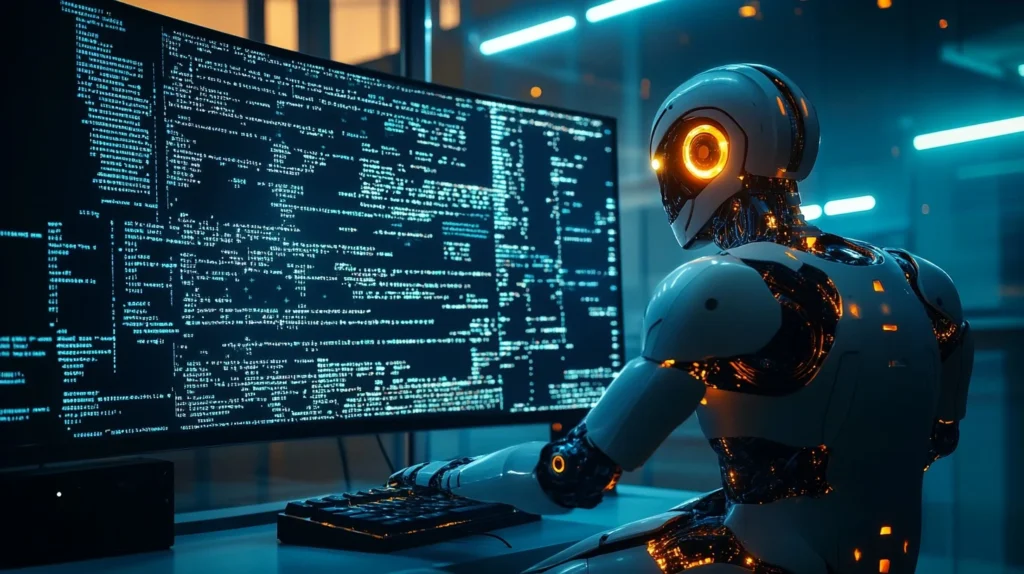AI-Powered Robotics
Focus Keyword: AI-powered robotics
Meta Description: From robot farmers to ethical dilemmas, discover how AI-powered robotics is reshaping our world—and what it means for you.
Introduction
Let me start with a confession: I used to think robots were clunky, beeping things that belonged in cheesy ‘80s movies. Then I met Moxie—a wide-eyed, conversational robot designed to help kids with autism learn social skills. It cracked a joke, tilted its head, and suddenly, I felt… empathy for a machine. That’s the weird, wonderful world we’re in. AI-powered robotics isn’t just changing industries; it’s blurring the line between tool and teammate. But hold on—before we get starry-eyed, let’s talk about the messy, thrilling, and sometimes unnerving reality of robots that think.
From “Dumb” Machines to Savvy Sidekicks
Remember Rosie the Robot from The Jetsons? We’re not there yet, but we’re close. Early robots were glorified toasters—programmed to weld a car door or vacuum your floor. Today’s robots? They’re more like interns. Take Tesla’s Optimus: it watches humans, learns from mistakes, and can (theoretically) fix itself. Or Boston Dynamics’ Atlas, which can parkour across obstacles like a caffeinated gymnast. The secret sauce? AI that lets robots adapt on the fly.
But here’s the kicker: these machines aren’t just replacing humans. They’re collaborating with us. In a Toyota factory, workers wear exoskeletons powered by AI to lift heavy parts without breaking a sweat. It’s not man vs. machine—it’s man plus machine.
Where AI Robots Are Crushing It (And Where They’re Creeping Us Out)
Healthcare’s New Heroes:
In Rwanda, Zipline’s delivery drones drop blood supplies to remote clinics via parachute—no landing required. They’ve slashed delivery times from 4 hours to 15 minutes.
Meanwhile, Siemens Healthineers uses AI robots to analyze X-rays for tuberculosis. They’re 30% faster than humans—but radiologists aren’t panicking. “They handle the grunt work so we can focus on patient care,” says Dr. Lisa Nguyen, a Boston-based specialist.
Farming’s Quiet Revolution:
California’s Stout AgTech built a weed-punching robot that identifies invasive plants and literally punches them into oblivion. No chemicals. Just fists.
In Japan, elderly farmers use tractor bots to tend rice fields. “My grandkids live in Tokyo, but my robot never complains,” laughs 78-year-old Hiroshi Yamamoto.
The Dark Side:
Last year, a security robot in Palo Alto mistook a toddler’s stuffed animal for a “suspicious package” and triggered a lockdown. Cue viral TikTok outrage.
Amazon’s warehouse robots? They’re efficient, but workers complain of “robot rage” when algorithms prioritize speed over safety.

The Elephant in the Room: Will Robots Steal Your Job?
Let’s cut through the hype. Yes, McKinsey predicts 800 million jobs could vanish by 2030 due to automation. But here’s what they don’t shout about: 950 million new roles will emerge. The catch? These jobs demand skills robots suck at—creativity, negotiation, and emotional intelligence.
Take Maria Gonzalez, a former assembly line worker in Detroit. She lost her job to a cobot in 2022. Now? She trains those same robots. “I teach them how to handle fragile parts,” she says. “They’re smart, but they’ll never have my ‘human touch’.”
Ethics: The Robot’s Moral Compass (Or Lack Thereof)
Imagine this: A self-driving car swerves to avoid a pedestrian… and kills its passenger. Who’s to blame? The programmer? The AI? The car itself?
Bias Alert: In 2023, a study found facial recognition robots in U.S. stores misidentify Black shoppers 5x more often than white ones. “It’s like digital racism,” says activist Jamal Carter.
Regulation Roulette: The EU’s strict AI Act fines companies for unethical bots. The U.S.? We’re still debating if a robot can even be unethical.
The Future: Robots with Heart (Literally)
The next frontier isn’t just smarter robots—it’s kinder ones.
ElliQ, a companion bot for seniors, reminds users to take meds, plays trivia, and even scolds them for skipping exercise. “She’s like a bossy granddaughter,” chuckles 82-year-old Edith.
RecycleBot, a trash-sorting robot in Sweden, uses AI to distinguish pizza boxes from plastic forks. It’s reduced landfill waste by 40% in Stockholm.
But let’s not kid ourselves: For every feel-good story, there’s a ChatGPT-powered scam bot tricking grandma out of her savings. The future’s bright, but only if we stay vigilant.
Final Word: Dance with the Robots, Don’t Fear Them
AI-powered robotics isn’t a dystopian plot—it’s a tool. Like fire, it can warm your home or burn it down. The key? Stay curious. Stay skeptical.
Next time you see a robot, ask yourself: Does it make life better? Fairer? Kinder? If not, demand better. After all, we built them. And we can unplug them, too.

